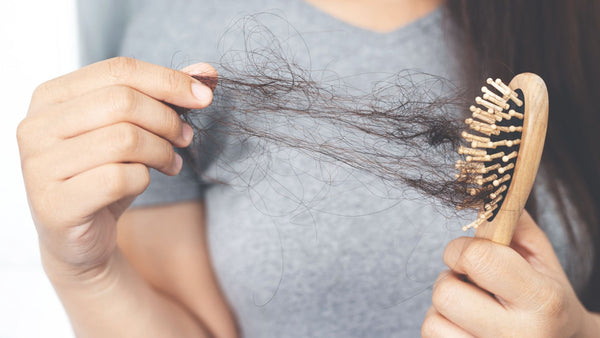Our Skin’s Microbiome

The mounting scientific evidence on the important role the microbiome plays in both our overall health, as well as the microbiome that reside topically on the exterior of the skin makes this subject worthy of thorough research. As new information comes to light you will find this topic featured regularly in this journal as well as at the APAN Conference programs.
This is indeed an inexhaustible topic so the information presented through the various articles and lectures will not be repetitive, but cover different information as it comes to light. Gaining an understanding of the complexities of how the microbiome facilitates biological processes is critical and the on-going scientific findings continue to place an even greater importance on their role in both disease prevention and optimal health of the body and the skin.
To enlighten you further on this subject, Gay Wardle addresses in this article the specific characteristics of the microbiome of the skin and how to use this information in improving skin immunity and ultimately achieve better results with your skin treatments.
Microbiome means that there is a collection of microorganisms found in one place. There is a lot of information surrounding gut health, gut bacteria, and the relationship between the brain and the gut, but we are also now understanding the relationship the gut bacteria has to skin bacteria. In this article I wish to draw your attention on understanding the microorganism habitat that lives on our skin and how to avoid possible prolonged inflammation from clinical treatments. Understanding the skin microbiome gives us insight into the bacterial involvement in the skin.
Our skin barrier is critical for survival, it slows down moisture loss and very importantly it protects us from invasion by substances that are toxic. The skin is an eco-system where a whole world of millions of populations of bacteria live. Scientific studies have to-date identified, classified and compared more than 112,000 bacterial gene sequences in human skin. I am sure there will be more as research continues in the future.
Bacteria live in a symbiotic and commensal relationship sharing a host, and that host is our skin. During birth the skin is colonised by microbes. which all begin to live in this symbiotic and commensal relationship and will continue to do so for the remainder of life. Because the skin has many different folds, different ranges of pH, variations of temperature, sebum content and moisture levels the colonisation of bacteria from region to region varies. Dry and moist skin had a broader variety of microbes than oily skin. Apart from the bacteria habitation on our skin, we also have fungi, viruses and mites that contribute to the biome of the skin all of which live in a symbiotic and commensal relationship.
ECCRINE AND APOCRINE GLANDS
There are both eccrine and apocrine glands that have totally different environments where their own unique microbiota colonises. Eccrine glands have a role to play with excreting water and electrolytes (salt) as well as creating acidification of the skin. This assists to prevent growth of microorganisms. The body has more eccrine glands than it does apocrine glands. Eccrine glands are found on all skin surfaces.
Apocrine glands respond to levels of cortisol. When cortisol increases this also results in the increase of their secretion. These glands are found largely in the axillary, genital and regions of the upper body. The secretions create an environment that is very suitable to bacteria. Therefore, larger colonisations of bacteria increase in these areas of the body and feed off the sebum.
The hydrophobic coating released by sebum in the sebaceous gland are anoxic and support the growth of bacteria such as Propioibacterium acnes (P.acnes) – this is a commensal bacteria. On the other hand, triglycerides that are found in sebum are hydrolysed by P.acnes bacterium and release free fatty acids. These free fatty acids contribute to the pH (4.5 – 5.5) of the skin creating an acidic environment. This acidic environment allows other bacteria such as Staphylococcus aureus and Streptococcus pyogenes (a species of Gram-positive bacterium in the genus Streptococcus) to be controlled. Where the pH is more alkaline these bacteria will increase in numbers.
WHAT FACTORS CONTRIBUTE TO BEING A HOST?
Fetal skin is sterile while in utero and as I have already mentioned, during birth, colonisation of bacteria will occur at this stage. This happens when the delivery is via the birth canal where the baby acquires healthy bacteria from the vagina. Caesarean births often allow unhealthy bacteria to colonise. Babies born through caesarean births are at risk of developing all types of skin rashes. Most babies born under caesarean section now, are swabbed with bacteria from the Mother’s vagina.
Changes occur during puberty where hormone changes increase the activation of sebum production which, in turn creates an environment for P.acnes bacteria to thrive. There are also huge differences in males and females in terms of sweat, sebum and hormone production during puberty. In most cases the male experiences a more aggressive change.
Menopause will have impact on where bacteria colonise due to changes in lamellar production. Age has a huge impact on the survival and how bacteria colonise on the skin.
We then need to consider the environment and how this will affect the host and the changes to the skin biome. This can be anything from hygiene, clinic treatments, products used on the skin, environment such as, humidity, heat, air-conditioning etc, to the clothing that are worn and how they are cleansed. Obsession with cleanliness can also have change to the delicate balance of the skin’s flora.
BACTERIA
The resident gram-positive bacteria include Staphylococcus, Micrococcus and Corynebacterium, Staphylococcus aureus and Streptococcus pyogenes. There are 15 different species of negative Staphylococci residing in the skin. Historically Staphylococcus epidermidis and other coagulase-negative staphylococci have been thought as the primary bacterial colonisers of the skin. Corynebacterium are very slow-growing organisms and tend to colonise in areas where there is moisture as does Staphylococci that use urea found in sweat as source of nitrogen.
Other bacteria that are major inhibitors of the skin include coryneform of the phylum Actinobacteria and Micrococcus. There are different strains of each of these bacteria. It would take an extremely high-powered microscope to see this incredible ecosystem, which comprises of approximately 1.9 square meters of colonies of microorganisms.
MITES
Demodex folliculorum and Demodex brevis are microscopic arthropods are a huge part of the skin’s biome. These microscopic mites feed on sebum and are very prevalent at times of increased androgen hormone activation where the sebaceous gland is highly activated. They are also found in large numbers on rosacea patients. They are residents of the pilosebaceous unit where they are common on the facial area of the body. Other food sources for these mites are epithelial cells that line the pilosebaceous unit and Propionibacterium acnes.
FUNGI
Malassezia spp. Have been found to constitute up to 80% of the total skin fungal population. It is not sure what percentage of population of other fungi groups such as Cryptococcus spp. are inhabitants of the skin.
VIRUSES
Studies are still continuing in identification of viruses and their role with the skin microbiome. I am sure it will not be too long in the future when we will have a greater understanding and further knowledge of viruses and the skin microbiome.
STRESS
Stress plays a huge role in the health of skin microbiome. It is also important to remember that when we are under stress there is a change to hormones that will have an affect to the lipid production to both keratinocyte cells and the sebaceous glands. This will cause a disruption to the host that will cause change in the skin microbiome. So, patients that also suffer from anxiety and depression with have changes to the skin microbiome. Medications such as antibiotics as well as high-sugar foods cause gut inflammation and add to this stress causing a huge disruption to the skin’s microbiome.
There are literally millions of our defence T-cells found in the skin and research is demonstrating that maybe these cells are being educated by the skin microbiome to identify microorganisms that might cause an infection in the skin. It’s amazing when you think about it.
Everyday the skin is under constant assault where the microbiome is disrupted in many different ways – using antibacterial washes and wipes, stress, gut health. as well as in-clinic treatments we perform – the list is long. A very good reason we need to ensure that homeostasis is maintained throughout clinic treatments.
BRINGING IT ALL TOGETHER
If you are healthy, have a good immune system and the correct balance of skin microbiota, your chances of keeping pathogens under control are high. But if you are sick, have a poor immune system, or the condition of your skin is compromised in any way, you have a portal of entry for disease.
Our skin is an incredibly important organ for good health. It is the first line of defence in protecting us against bacteria. It is the first thing that comes in contact with the outside world that is full of bacteria, fungus and viruses.
Microorganisms are potentially the problem for many skin disorders, some bacteria normally considered as commensals, can become pathogenic when they escape their original niche and start to colonise deeper tissues. Bacteria belonging to the microbiota, and therefore considered as commensals, can also become pathogenic if their growth rate raises allowing them to outcompete other bacteria.
The importance of understanding and having respect for the skin’s microbiome is an understatement when it comes to today’s clinical treatments that we provide to our client population.
To further enhance your knowledge and understanding of the skin and the various factors that contribute to skin health we recommend you undertake my Everything You Need to Know About Skin online course. Head over to the "Education" tab to find out more.
Yours in skin,
Gay Wardle




